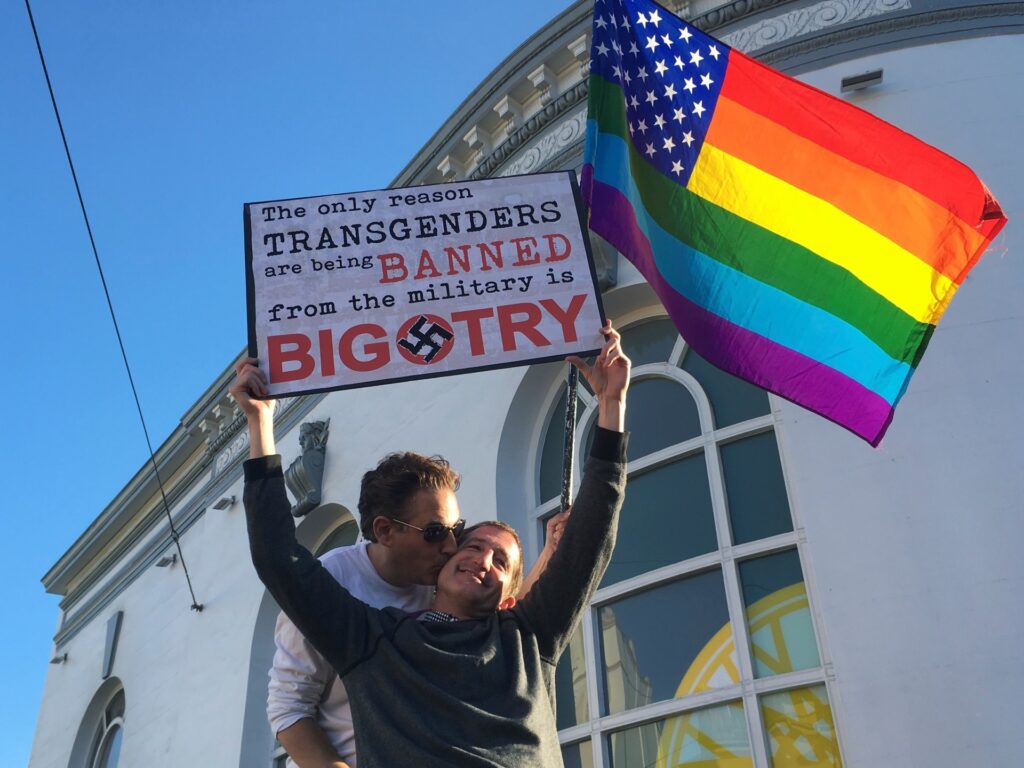The U.S. Supreme Court allows the ban on transgender military members to be enforced while the legal challenges surrounding restrictions continue.
On Tuesday, the conservative court majority issued an unsigned order lifting a lower court injunction that prevented the ban from coming into effect.
The order also showed that three left-leaning judges on the Supreme Court, Sonia Sotomayor, Elena Kagan and Ketanji Brown Jackson, tried to deny an emergency request to lift the injunction.
Since taking office in his second term on January 20th, President Donald Trump has sought to reduce the rights and visibility of transgender people in the United States, including military service restrictions.
On his first day in office, Trump signed an executive order declaring that his administration “recognizes two genders, male and female.” That same day he rescinded the order from his predecessor, Democrat Joe Biden.
Then, on January 27th, he issued a new directive called “Military Excellence and Preparation Prioritization.” We compared being transgender with adopting “fake” gender identity.”
Such an identity was not compatible with the “strict standards required for military service.”
“Even in personal life, the Soldier’s commitment to an honorable, true, disciplined lifestyle and adoption of gender identities that contradict individual sexual conflict,” the executive order said.
“It is a man’s claim that he is a woman, and his requirement for others to respect this falsehood is not consistent with the humility and selflessness required of a service member.”
That executive order raised many legal challenges, including one at the heart of Tuesday’s Supreme Court order.
In that case, seven active service members, as well as another person hoping to enlist in civil rights agencies and enlisted the ban on transgender identity was discriminatory and unconstitutional.
Supporters of the group point out that the seven of them have joined forces with over 70 medals. The main plaintiff, Commander Emily Schilling, spent nearly 20 years in the Navy, flying 60 missions as a combat pilot. Her lawyer estimates that nearly $20 million has been invested in her training during that time.
However, the Trump administration argued that the presence of transgender forces is the responsibility of the military.
“Another big victory in the Supreme Court!” White House Press Secretary Caroline Leavitt posted on social media following Tuesday’s order.
“With President Trump and [Defense Secretary Pete Hegseth] Restoring an army focused on preparation and lethality. ”
Hegseth posted a short message using the Department of Defense acronym. “Trans @Dod is no longer there.”

This is not the first time Trump has tried to remove trans people from the military. Shortly after taking office in July 2017, Trump announced a similar policy on social media platform Twitter. It is now known as X.
“After consulting with my general and military experts, the US government advises that transgender individuals will not accept or allow them to serve in any capacity of the US military,” Trump wrote in a series of elliptical-separated posts.
Similarly, in 2019, the Supreme Court allowed the ban to come into effect. Then, in 2021, Biden’s executive order invalidated it.
The Trump administration pointed to past success in the Supreme Court in an emergency appeal that lower court injunctions prevented the latest ban on transgender forces.
That temporary injunction was a decision by a US District Court judge in Tacoma, Washington: Benjamin settled. Settle, a former Army captain himself, was appointed to his position under former Republican President George W. Bush.
In March, Settle blocked the ban on transgender forces, and the government referred to the “military ruling” in its application, but the argument showed “lack of evidence” that the restrictions were related to military issues.
“The government’s argument is unconvincing and is not a particularly close question about this record,” he wrote.
Similarly, other judges issued an injunction that included Washington, D.C. District Judge Ana Reyes. She ruled when 14 transgender services members opposed Trump’s ban, citing their right to equal protection under the law set forth in the fifth amendment of the Constitution.
“The cruel irony is that thousands of transgender soldiers have certainly sacrificed to others the very equal protection that the ban attempts to deny them,” Reyes wrote in her decision, published in March just before Settle.
Of the more than 2.1 million troops serving the US military, less than 1% are estimated to be transgender.
Last year, one senior official estimated that there are only about 4,200 transgender service members in active duty, but advocates say the numbers could be short given the risks of violence and discrimination associated with being openly transgender.
Human rights group Lambda Legal and the Human Rights Campaign Foundation were among those supporting trans service members in the fight against Trump’s ban. The two organisations issued a joint statement on Tuesday denounced the High Court’s decision.
“By ensuring this discriminatory ban comes into force while our challenge continues, the court has temporarily approved policies that are not related to military preparation and everything that is unrelated to bias,” they wrote.
“We continue to cling to our belief that this ban violates the constitutional guarantee of equal protection and will ultimately be revoked.”
Source link

